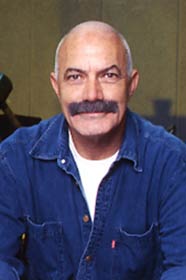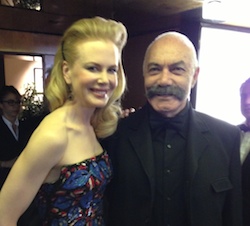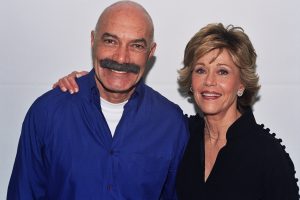




If Tim wants to shoot 18 million feet of film of me staring into a light balb and I couldn’t blink for three months, Ill do it.
Johnny Depp
In their fifth collaboration, director Tim Burton and actor Johnny Depp follow the familiar creative rhythm that began when the director cast Depp as the lead in the 1990 poignant fantasy, “Edward Scissorhands.” They subsequently re-teamed for the critically acclaimed “Ed Wood” and “Sleepy Hollow,” and are currently working together on the stop-animation feature, “Tim Burton’s Corpse Bride.”
With five films together, the Burton-Depp collaboration is one of the most fruitful in American film history, similar in creativity and mutual fertilization to the one between Martin Scorsese and Robert De Niro.
Getting the Role
When Tim Burton proposed the role of Willy Wonks to his friend and frequent collaborator, Johnny Depp, he was barely able to get the words out.
We were having dinner, and Tim said, I want to talk to you about something. You know that story, Charlie and the Chocolate Factory Well, Im going to do it and Im wondering if youd want to play.’ And I couldn’t even wait for him to finish the sentence. I said, Im in. Absolutely. No question about it.
To be chosen to play Willy Wonka in itself is a great honor, but to be chosen by Tim Burton is double, triple the honor. His vision is always amazing, beyond anything you expect. Just the fact that he was involved meant I didn’t need to see a script before committing. If Tim wants to shoot 18 million feet of film of me staring into a light balb and I couldn’t blink for three months, Ill do it.
The Book’s Magic
I especially appreciate the unexpected twists in Dahl’s writing. You think it’s going in one direction, and then it slams you with another alternative, another route, and makes you think. At the center, “Charlie and the Chocolate Factory” is a great morality tale. But there’s also a lot of magic and fun.
The Movie Vs. the Book
There’s dark stuff in the movie. In one scene, Wonka tells one of the mothers to go boil her own head. But it comes from the book: Dahl had a pretty bleak and black sense of humor.
Interpreting Willy Wonka
Willy is forced to open his beloved factory for the first time in 15 years to find an heir. He puts on his game face in front of people, but underneath he has a great anxiety about actual contact or closeness. I believe he’s a germophobe, which is why he wears gloves, and in addition to the gloves, it’s as if he’s wearing a mask.
There are times during the tour when we watch Wonka acting, and acting badly, literally reading off cue cards. I don’t think he really wants to spend any time with these people. I think he’s struggling, from the first second, to put on an act for them and keep a smile.
At the same time, a part of him is genuinely excited about being the grand showman, like P.T. Barnum, pointing out everything he’s created and saying, hey, look at this! Look what Ive done. Isn’t it wonderful!
Wonka’s Look
I made some deliberate choices about Wonka’s hair and other small but significant details. The hair was one of those elements I saw clearly very early on. The top hat was easy, because that came right from Quentin Blake drawings, but the hair I imagined as a kind of Prince Valiant do, high bangs and a bob, extreme and very unflattering, but something that Wonka probably thinks is cool, because he’s been locked away for such a long time and doesn’t know any better, like the outdated slang he uses.
Based on the book’s description of Wonka’s sparkling eyes, I selected a pair of violet-tinted contact lenses for an effective dimension of color. And drawing from the story of Wonka’s childhood orthodontia, I decided I should flash remarkably perfect teeth. A distinctly pale skin tone, from years of living indoors, makes Wonka look an extraordinary figure of outlandish but expensive tastes, with a style of speech and presentation as unique as his lifestyle.










